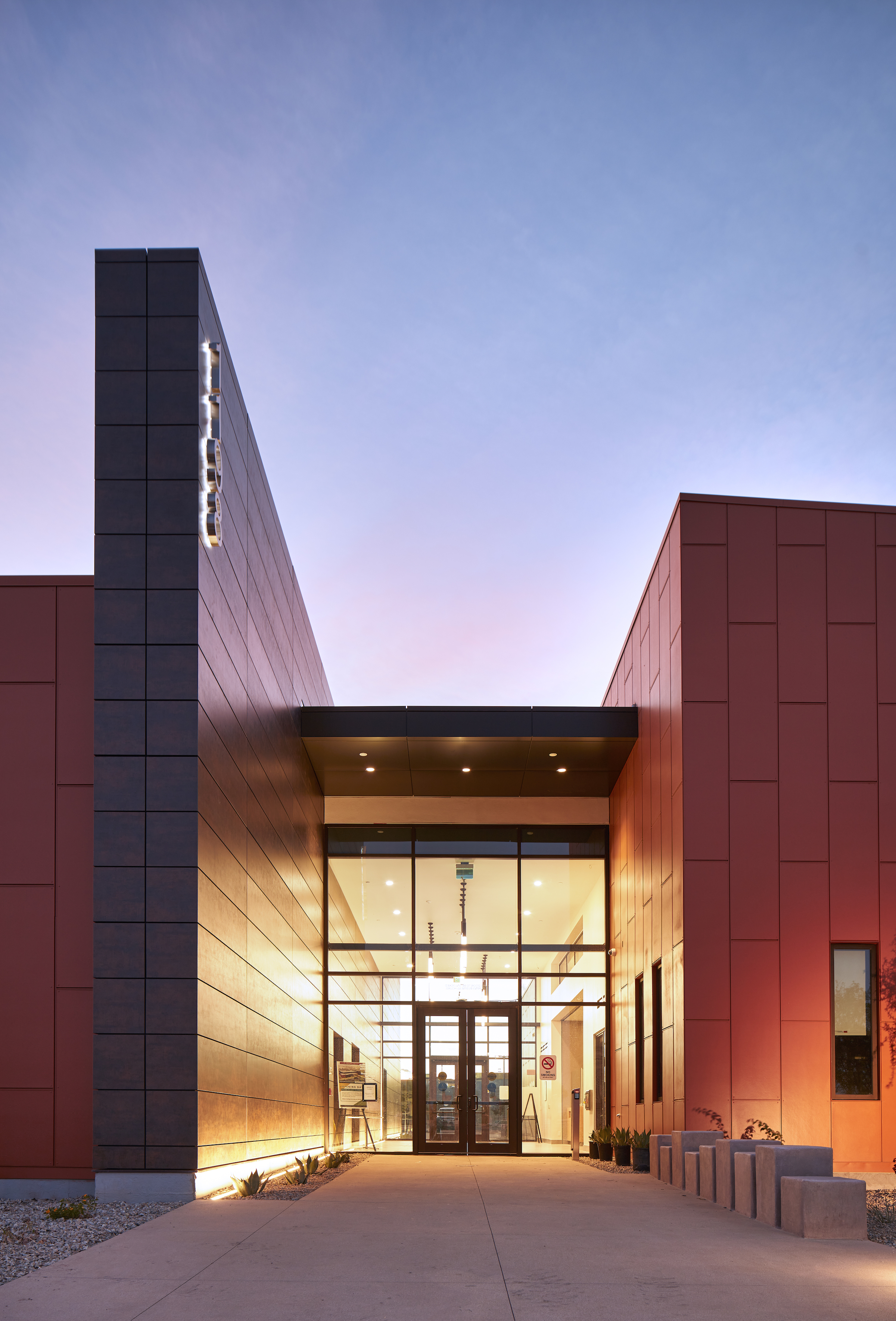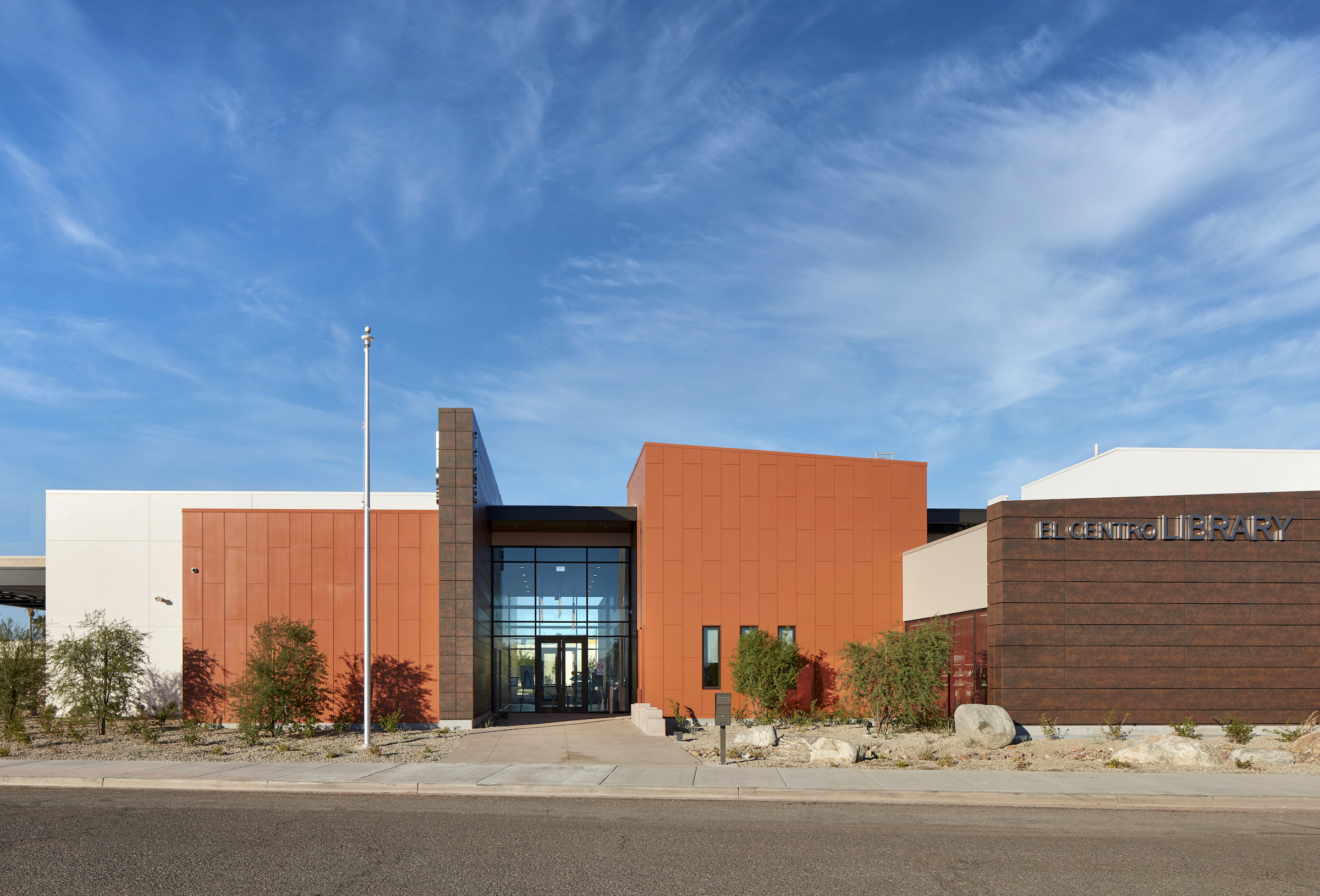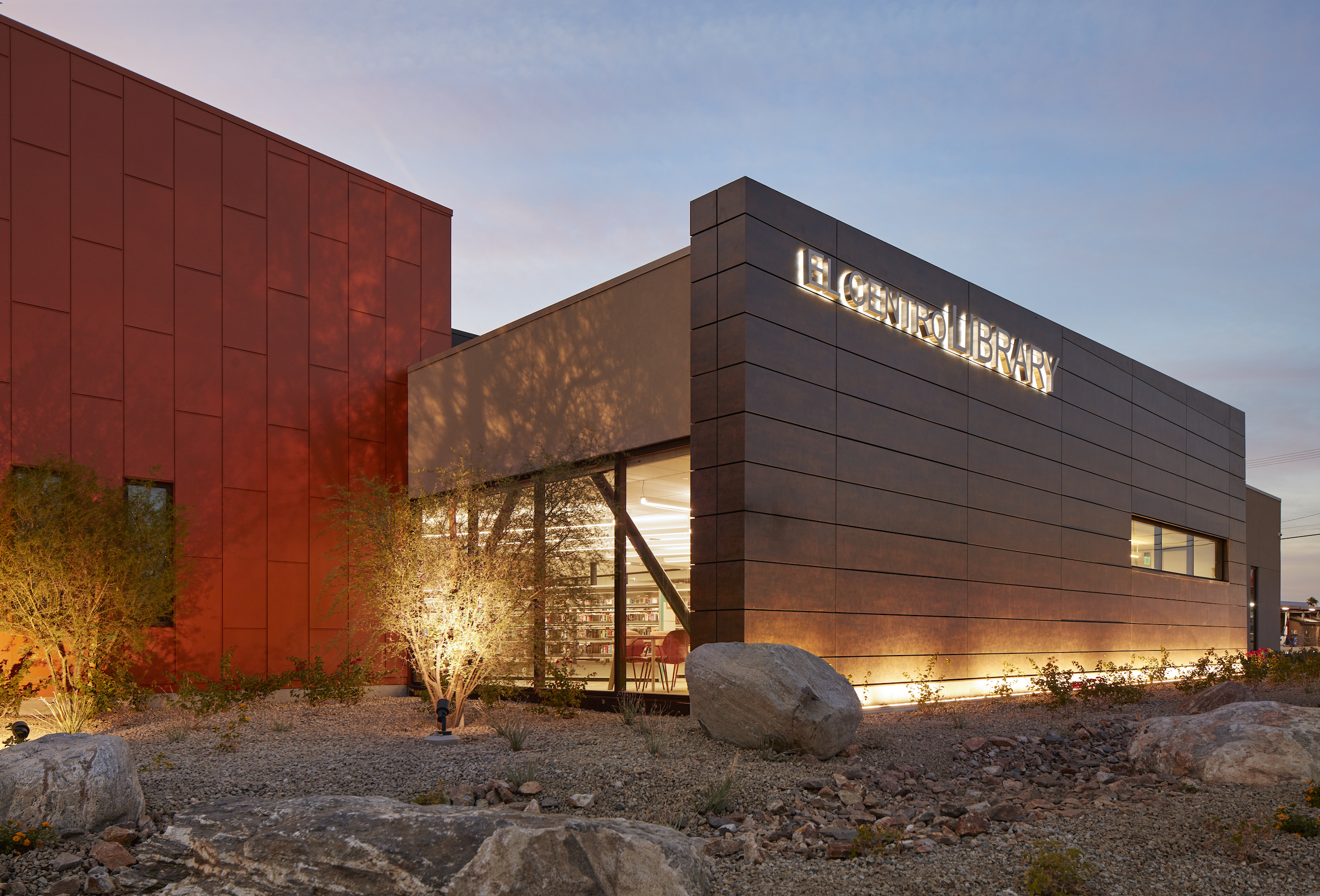California’s El Centro community, about two hours east of San Diego, recently opened a new $17 million public library. With design by Ferguson Pape Baldwin Architects and engineering services by Latitude 33 Planning & Engineering, the 19,811-sf building replaces the previous library, which was built in the early 1900s, damaged by a 7.2 earthquake that struck Baja California in 2010, and demolished in 2016.
The new library features a two-story, 1,000-sf lobby that can be entered from both the front road and the parking lot, facilitating access for both patron vehicles and public transportation. On opposite sides of the building are two outdoor, shaded patios: a 500-sf reading patio with access from the adult area and homework center, and a 1,600-sf patio that serves as overflow space from the community room. The library also includes a computer area, study rooms, bookstore, and age-specific reading areas for children, teens, and adults.
Following engagement with community members, the design team incorporated elements that reflect the region’s topography. These features include rock fences, perforated shade canopies that resemble the patchwork pattern of local agricultural fields, and colors and textures that evoke the canyon walls of the Painted George, 25 miles west of El Centro. The children’s area has the look and feel of an archaeological dig site.
The design team also incorporated sustainable strategies such as optimized building insulation, high-performance glazing, and energy-efficient mechanical and lighting systems.
“This space will be a regional beacon that will provide enrichment, learning, and a context for community building for generations to come,” Justin R. Giles, PE, associate with Latitude 33, said in a statement.
On the Building Team:
Owner: City of El Centro
Design architect and architect of record: Ferguson Pape Baldwin Architects
Engineering services: Latitude 33 Planning & Engineering
Landscape architect: Spurlock Landscape Architects
MEP engineer: GLUMAC
Structural engineer: Wiseman & Rohy
General contractor/construction manager: Barnhart-Reese Construction





Related Stories
| Jul 18, 2014
Top Engineering/Architecture Firms [2014 Giants 300 Report]
Jacobs, AECOM, Parsons Brinckerhoff top Building Design+Construction's 2014 ranking of the largest engineering/architecture firms in the United States.
| Jul 18, 2014
Top Engineering Firms [2014 Giants 300 Report]
Fluor, Arup, Day & Zimmermann top Building Design+Construction's 2014 ranking of the largest engineering firms in the United States.
| Jul 18, 2014
Top Architecture Firms [2014 Giants 300 Report]
Gensler, Perkins+Will, NBBJ top Building Design+Construction's 2014 ranking of the largest architecture firms in the United States.
| Jul 18, 2014
2014 Giants 300 Report
Building Design+Construction magazine's annual ranking the nation's largest architecture, engineering, and construction firms in the U.S.
| Jul 7, 2014
7 emerging design trends in brick buildings
From wild architectural shapes to unique color blends and pattern arrangements, these projects demonstrate the design possibilities of brick.
| Jul 2, 2014
Emerging trends in commercial flooring
Rectangular tiles, digital graphic applications, the resurgence of terrazzo, and product transparency headline today’s commercial flooring trends.
| Jun 30, 2014
Research finds continued growth of design-build throughout United States
New research findings indicate that for the first time more than half of projects above $10 million are being completed through design-build project delivery.
| Jun 18, 2014
Arup uses 3D printing to fabricate one-of-a-kind structural steel components
The firm's research shows that 3D printing has the potential to reduce costs, cut waste, and slash the carbon footprint of the construction sector.
| Jun 16, 2014
6 U.S. cities at the forefront of innovation districts
A new Brookings Institution study records the emergence of “competitive places that are also cool spaces.”
| Jun 12, 2014
Austrian university develops 'inflatable' concrete dome method
Constructing a concrete dome is a costly process, but this may change soon. A team from the Vienna University of Technology has developed a method that allows concrete domes to form with the use of air and steel cables instead of expensive, timber supporting structures.
















